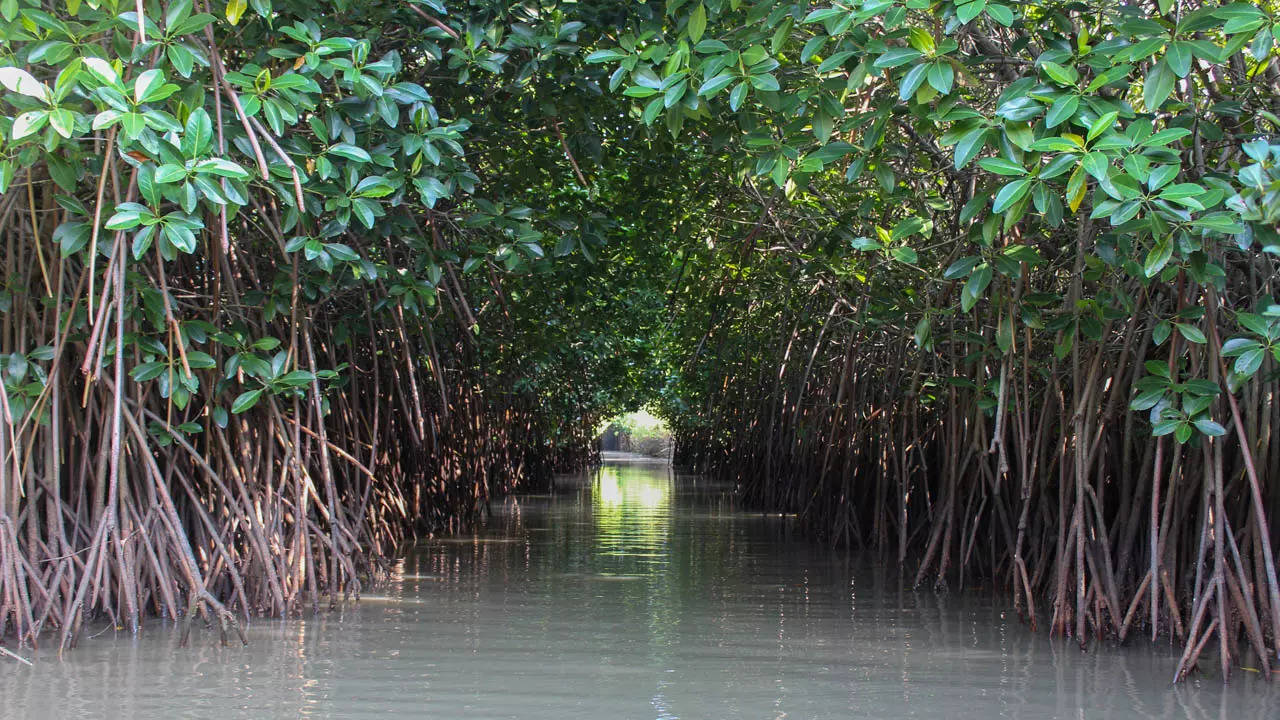Climate change can disturb delicate balance in the world’s best carbon sink, study finds
Latest research has found that climate change is impacting the ‘blue carbon’ system or the world’s oceans and coastal ecosystems. With carbon sinks being affected, the world is another big step away from combating climate change.

The world's second-largest mangrove forest at Pichavaram near Chidambaram in Tamil Nadu
Photo : iStock
New research has found that stored carbon from atmospheric carbon dioxide can be processed by organisms. The study, published on Thursday by the University of Portsmouth and facilitated by research organization Operation Wallacea, suggests that climate change can significantly impact the ‘blue carbon’ system, which refers to the carbon captured by the world’s oceans and coastal ecosystems.
Scientists from the University of Portsmouth analysed large woody debris (LWD) found in four mangrove forests in Indonesia’s Wakatobi National Park. These four mangroves each had differing intertidal zones, which is the area of land underwater during a high tide and the area above the water at a low tide. Each survey area had up to eight sections that revealed their own way of processing carbon.
In the upper parts of the ecosystem which were closer to the land, the research team discovered organisms typically found in tropical rainforests breaking down fallen wood. The organisms included fungi, beetle larvae and termites. In the land more toward the ocean, the large woody debris was being degraded more rapidly by shipworms, which are worm-like clams with calcium carbonate shells.
Climate change has the potential to disturb the delicate process of fixed carbon degradation in mangrove forests. First of all, climate change has led to rising sea levels, which impacts the carbon cycle because it’s driven by tidal elevation. Secondly, climate change has led to an increase in ocean acidification, which is caused by the elevating carbon dioxide levels in the atmosphere. This can dissolve the shells of the marine organisms degrading the wood in the lower reaches of the land.
“This data highlights the delicate balance between wood-biodegrading organisms and fallen mangrove wood. Mangrove forests are crucial to mitigating climate change, and alterations to the breakdown of fallen wood in the forests will change the above-ground carbon cycles, which may have an effect on mangrove carbon stores,” Dr. Ian Hendy, the lead author of the study from the University of Portsmouth’s School of Biological Sciences said.
Dr Hendy and his team now plan to take part in a large-scale mangrove restoration project in Mexico. This joint biodiversity initiative known as rePLANET is working with a group of scientists in Portsmouth, Brighton, Singapore and Mexico to be able to fund a series of PhD research projects examining the innovative approaches being undertaken to preserve and protect forests.
“The team’s goal now is to use the findings from this study to guide large-scale restoration of mangrove forests across the globe,” Dr Simon Cragg, a co-author of the study from the University of Portsmouth, added.
Most of the emissions released, ranging from forest fires to smoking industrial chimneys, remain in the atmosphere. A lot of these emissions release carbon and when carbon in the environment increases, so does the temperature of the earth.
Carbon sinks are crucial to the survival of the ecosystem because they help absorb a lot of such emissions into the atmosphere. Whether these carbon sinks are soil, oceans, or vegetation, these natural storage solutions slow down climate change far more effectively than any human technology developed to combat the climate crisis.
However, with more and more carbon dioxide being released into the atmosphere, it’s getting increasingly difficult for carbon sinks to maintain the right balance of emissions and gases in the atmosphere.
“Typically, CO2 emissions released in the atmosphere are absorbed by the land and ocean, and some could accumulate in the atmosphere. Today we are releasing CO2 beyond the cleansing capability of the planet. Therefore, the accumulation in the atmosphere has become excessive and that is what is known as increasing atmospheric concentration of CO2 and is causing global warming,” Avantika Goswami, the Deputy Programme Manager of Climate Change at the Center for Science and Environment (CSE), said.
Using fewer fossil fuels and reducing emissions is said to be one of the most efficient and effective ways forward to prevent climate change to affect carbon sinks.
Trending:
End of Article
Subscribe to our daily Newsletter!
Related News





Tech Layoffs 2024: Experts Explain Why The Tech Industry Is Most Affected

Who Built NASA's James Webb Space Telescope?

Explained: What Is 60% Kannada Rule That Saw Violent Protests In Bengaluru

Disease X Versus COVID-19: What Are Similarities And Difference Between Two

Are We Prepared to Deal with Disease X?








